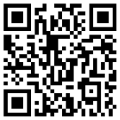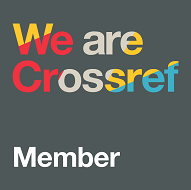An interaction analysis model to study knowledge construction in xMOOCs
Abstract
One of the recent tools of online teaching and learning has been MOOC which utilizes the web and can be considered a critical factor in delivering future lessons. Coursera is an approved and famous online learning tool established by two professors from Stanford. According to previous studies, Coursera concentrates on duplicating knowledge instead of constructing it. The present work aims at observing Coursera community in its normal context and investigating how participants construct knowledge. The required data were gathered through archive data including the top and chosen posts of online discussion groups. The interaction analysis model (IAM) was used to qualitatively analyze the data. In the observed courses, it was found that Coursera is mostly at Phase I (sharing/comparing information) of the IAM. Using the IAM which was first proposed for investigations of online debates, the research found a new phase and operations for assessing the level of knowledge construction in online discussion forums. This research bridges the gaps in the related literature by providing a foundation for understanding knowledge construction in the xMOOC context. Besides, this research developed understanding for future work which is a Coursera community framework that generally makes a MOOC community more potential to construct knowledge.
Full Text:
PDFReferences
C. C. Chen and K. T. Jones, “Blended learning vs. traditional classroom settings: Assessing effectiveness and student perceptions in an MBA accounting course.,” J. Educ. online, vol. 4, no. 1, p. n1, 2007.
T. R. Liyanagunawardena, A. A. Adams, and S. A. Williams, “MOOCs: A systematic study of the published literature 2008-2012,” Int. Rev. Res. open Distrib. Learn., vol. 14, no. 3, pp. 202–227, 2013.
P. Hill, “Online educational delivery models: A descriptive view,” Educ. Rev., vol. 47, no. 6, pp. 84–86, 2012.
R. Saadatdoost, A. T. H. Sim, H. Jafarkarimi, and J. Mei Hee, “Exploring MOOC from education and Information Systems perspectives: a short literature review,” Educ. Rev., vol. 67, no. 4, pp. 505–518, 2015.
L. Yuan, S. MacNeill, and W. G. Kraan, “Open Educational Resources-Opportunities and challenges for higher education,” 2008.
D. Cormier, “The CCK08 MOOC–Connectivism course, 1/4 way,” 2008.
G. Siemens and S. Downes, “Connectivism & connective knowledge.” 2008.
L. Yuan and S. J. Powell, “MOOCs and open education: Implications for higher education,” 2013.
L. P. Dringus and T. Ellis, “Temporal transitions in participation flow in an asynchronous discussion forum,” Comput. Educ., vol. 54, no. 2, pp. 340–349, 2010.
S. Mak, R. Williams, and J. Mackness, “Blogs and forums as communication and learning tools in a MOOC,” in Proceedings of the 7th International Conference on Networked Learning 2010, 2010, pp. 275–285.
D. Nandi, M. Hamilton, and J. Harland, “Evaluating the quality of interaction in asynchronous discussion forums in fully online courses,” Distance Educ., vol. 33, no. 1, pp. 5–30, 2012.
L. M. Harasim, Global networks: Computers and international communication. MIT press, 1993.
A. Y. Su, S. J. Yang, W. Y. Hwang, and J. Zhang, “A Web 2.0-based collaborative annotation system for enhancing knowledge sharing in collaborative learning environments,” Comput. Educ., vol. 55, no. 2, pp. 752–766, 2010.
D. R. Garrison, “Online collaboration principles,” J. Asynchronous Learn. Networks, vol. 10, no. 1, pp. 25–34, 2006.
K. A. Bruffee, Collaborative Learning: Higher Education, Interdependence, and TheAuthority of Knowledge. Johns Hopkins University Press, 1999.
C. J. Dede, “The evolution of distance learning: Technology-mediated interactive learning,” J. Res. Comput. Educ., vol. 22, no. 3, pp. 247–264, 1990.
L. M. Harasim, S. R. Hiltz, L. Teles, and M. Turoff, Learning networks: A field guide to teaching and learning online. MIT press, 1995.
E. Hargreaves, “The validity of collaborative assessment for learning,” Assess. Educ., vol. 14, no. 2, pp. 185–199, 2007.
T. Koschmann, “Paradigm shifts and instructional technology: An introduction,” CSCL Theory Pract. an Emerg. Paradig., vol. 116, pp. 1–23, 1996.
Z. A. Reis and Z. Karadag, “A new model for collaborative learning in computer based mathematics instruction: 4s,” Procedia-Social Behav. Sci., vol. 1, no. 1, pp. 1949–1956, 2009.
O. Rodriguez, “The concept of openness behind c and x-MOOCs (Massive Open Online Courses),” Open Prax., vol. 5, no. 1, pp. 67–73, 2013.
C. Liu, D. Zou, X. Chen, H. Xie, and W. H. Chan, “A bibliometric review on latent topics and trends of the empirical MOOC literature (2008–2019),” Asia Pacific Educ. Rev., vol. 22, no. 3, pp. 515–534, 2021.
C. E. Hmelo-Silver, “Analyzing collaborative knowledge construction: Multiple methods for integrated understanding,” Comput. Educ., vol. 41, no. 4, pp. 397–420, 2003.
M. Cole, Cultural psychology: A once and future discipline. Harvard university press, 1996.
Y. Engeström, “Activity theory and individual and social transformation,” Perspect. Act. theory, vol. 19, no. 38, pp. 19–30, 1999.
A. S. Palincsar, “Social constructivist perspectives on teaching and learning,” Annu. Rev. Psychol., vol. 49, no. 1, pp. 345–375, 1998.
R. D. Pea, “Practices of distributed intelligence and designs for education,” Distrib. Cogn. Psychol. Educ. considerations, vol. 11, pp. 47–87, 1993.
L. S. Vygotsky, Thought and language. MIT press, 2012.
P. Cobb and E. Yackel, “Constructivist, emergent, and sociocultural perspectives in the context of developmental research,” Educ. Psychol., vol. 31, no. 3–4, pp. 175–190, 1996.
T. Koschmann, P. Glenn, and M. Conlee, “When is a problem-based tutorial not tutorial? Analyzing the tutor’s role in the emergence of a learning issue,” Probl. Learn. A Res. Perspect. Learn. Interact., pp. 53–74, 2000.
W. Bernhard, N. Bittel, S. Van der Vlies, M. Bettoni, and N. Roth, “The MOOCs business model,” Procedia-Social Behav. Sci., vol. 106, pp. 2931–2937, 2013.
R. Kumar, Research methodology: A step-by-step guide for beginners. Sage, 2018.
R. V. Kozinets, “Netnography: The marketer’s secret weapon,” White Pap., pp. 1–13, 2010.
R. Saadatdoost, A. T. H. Sim, H. Jafarkarimi, and J. M. Hee, “Understanding the Setting of a MOOC: A Journey into Coursera,” Int. J. Inf. Commun. Technol. Educ., vol. 12, no. 1, pp. 77–98, 2016.
R. Saadatdoost, A. T. H. Sim, N. Mittal, H. Jafarkarimi, and J. M. Hee, “A Netnography Study of MOOC Community.,” in PACIS, 2014, p. 116.
R. V. Kozinets, “Doing ethnographic research online,” Kozinets, Netnography Essent. Guid. to Qual. Soc. Media Res., 2009.
D. Kulavuz-Onal, English language teachers’ learning to teach with technology through participation in an online community of practice: A netnography of Webheads in Action. University of South Florida, 2013.
C. N. Gunawardena, C. A. Lowe, and T. Anderson, “Analysis of a global online debate and the development of an interaction analysis model for examining social construction of knowledge in computer conferencing,” J. Educ. Comput. Res., vol. 17, no. 4, pp. 397–431, 1997.
L. Krefting, “Rigor in qualitative research: The assessment of trustworthiness,” Am. J. Occup. Ther., vol. 45, no. 3, pp. 214–222, 1991.
H. T. Hou, K. E. Chang, and Y. T. Sung, “Using blogs as a professional development tool for teachers: Analysis of interaction behavioral patterns,” Interact. Learn. Environ., vol. 17, no. 4, pp. 325–340, 2009.
T. M. Paulus, “CMC modes for learning tasks at a distance,” J. Comput. Commun., vol. 12, no. 4, pp. 1322–1345, 2007.
F. Henri, “Computer conferencing and content analysis,” Collab. Learn. through Comput. Conf. Najaden Pap., vol. 90, pp. 117–136, 1992.
M. Malliris, “The role of Peer Assisted Learning in supporting student transition to HE STEM programmes: PAL ‘in’and ‘beyond’the classroom.” National HE STEM Programme, South West Spoke. hestem-sw. org. uk, 2012.
J. Daniel, “Making Sense of MOOCs: Musings in a Maze of Myth,” Parad. Possibility, vol. 25, pp. 321–323, 2012.
M. Gaebel, MOOCs: Massive open online courses, vol. 11. EUA Geneva, 2014.
W. B. S. N. Utility and M. Zuckerberg, “The Electronic Journal for English as a Second Language,” Electron. J. English as a Second Lang., vol. 13, no. 3, 2009.
M. Lucas, C. Gunawardena, and A. Moreira, “Assessing social construction of knowledge online: A critique of the interaction analysis model,” Comput. Human Behav., vol. 30, pp. 574–582, 2014.
DOI: http://dx.doi.org/10.17977/um010v5i22022p76-85
Refbacks
- There are currently no refbacks.
 | Letters in Information Technology Education (LITE) |

1.png)
1.png)
4.png)
1.png)
.png)
.png)

3.png)
1.png)
1.png)

3.jpg)